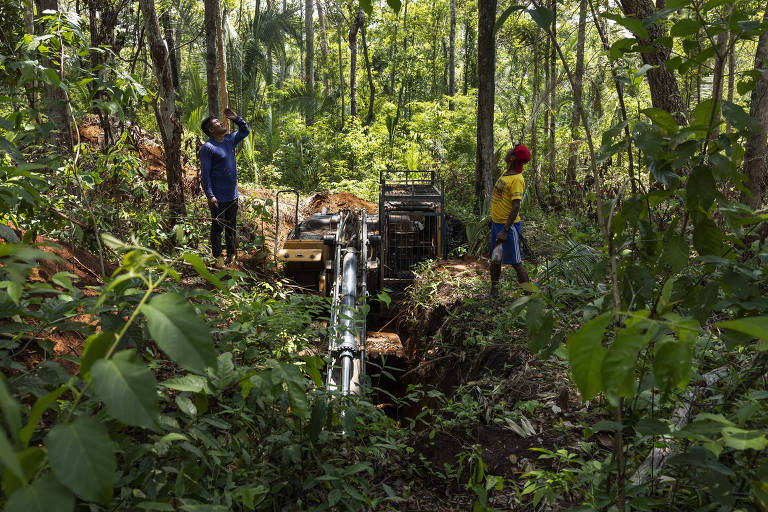There is no chance for the three Funai officials and the five National Public Security Force police officers working at the surveillance post to cope with the scale of the ongoing crime in the Indigenous Land Sararé, where 2,000 invaders tear up the land every day, all day long, in search of gold. In 2023, Sararé was the second territory with the most mining alerts in Brazil.
The land in the Guaporé Valley is small compared to territories with larger areas of illegal gold exploration in the country—Kayapó, Mundurucu, and Yanomami, in that order. However, in Sararé land, the mines exploit forms of devastation not seen in other traditional territories, adding to an already known modus operandi. Dozens of excavators are currently in operation.
Barges and dredges were found in activity until a few weeks ago. And, at the top of the Serra da Borda, located in indigenous land, explosives are used to open L-shaped tunnels, veins filled with people seeking gold. Blocks of stones, detached by drills, are thrown into motor mills for panning.
The effects of such aggressive land exploitation are immediate for the indigenous people. They are felt in the community and individually, in a profusion of stories that materialize the perception that something is out of place. While the 'piseiro' music plays in Fofoquinha, a Nambikwara couple lives in anguish waiting for any news of their 12-year-old daughter. The girl was taken from the family's home in the Sararé Central village by another indigenous person from the community, lured by illegal gold exploration. The destination was one of the expanding mines in the indigenous land.
